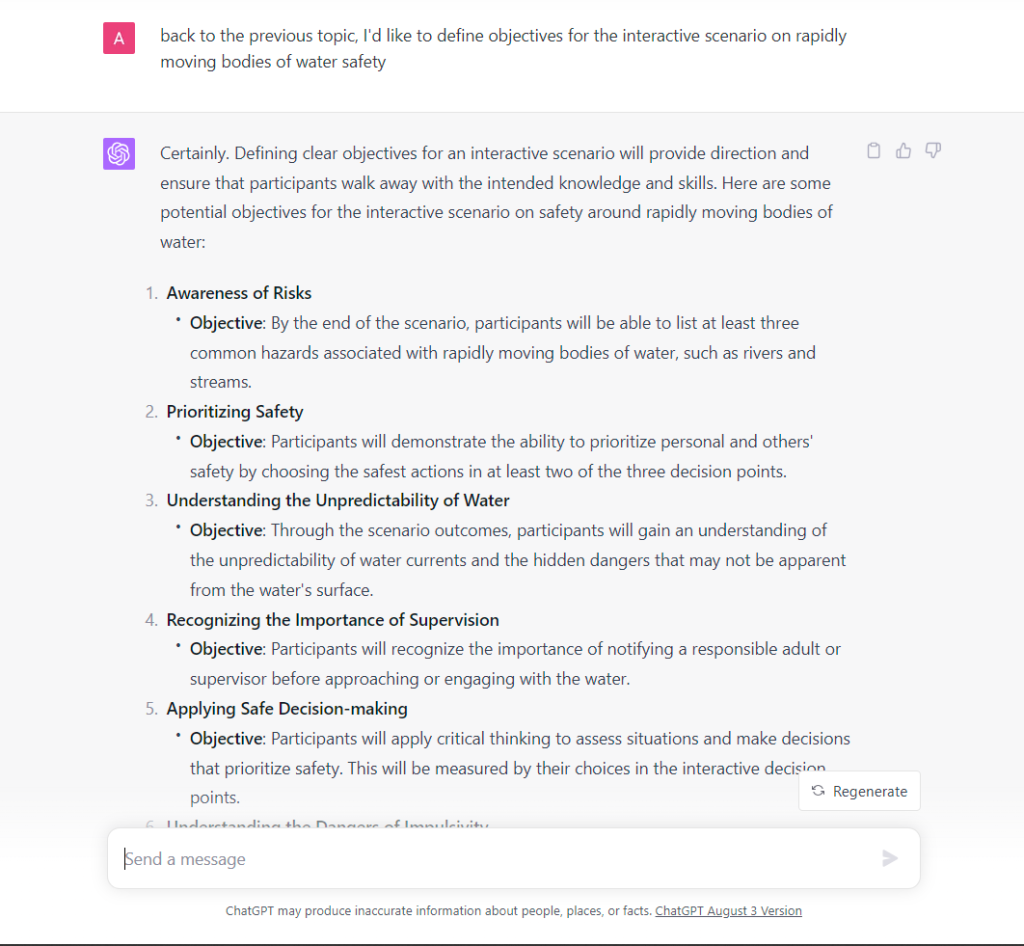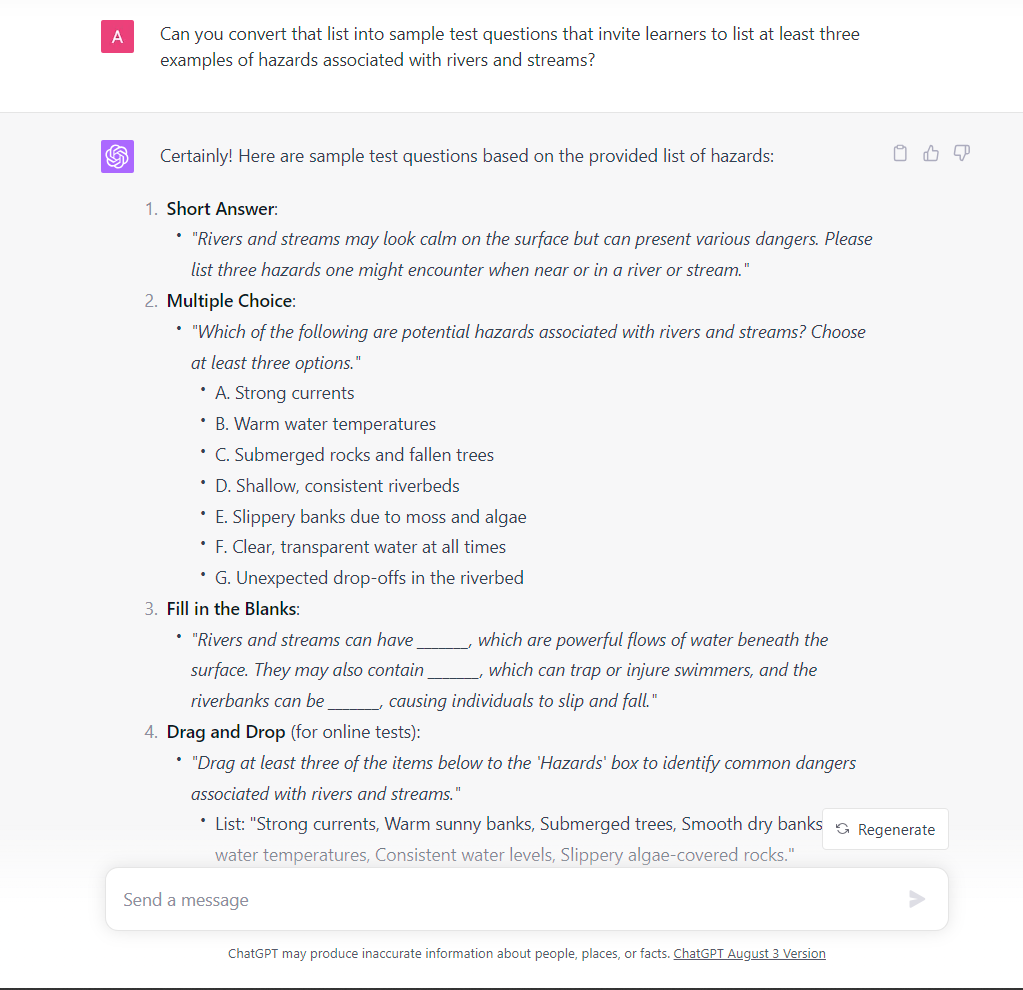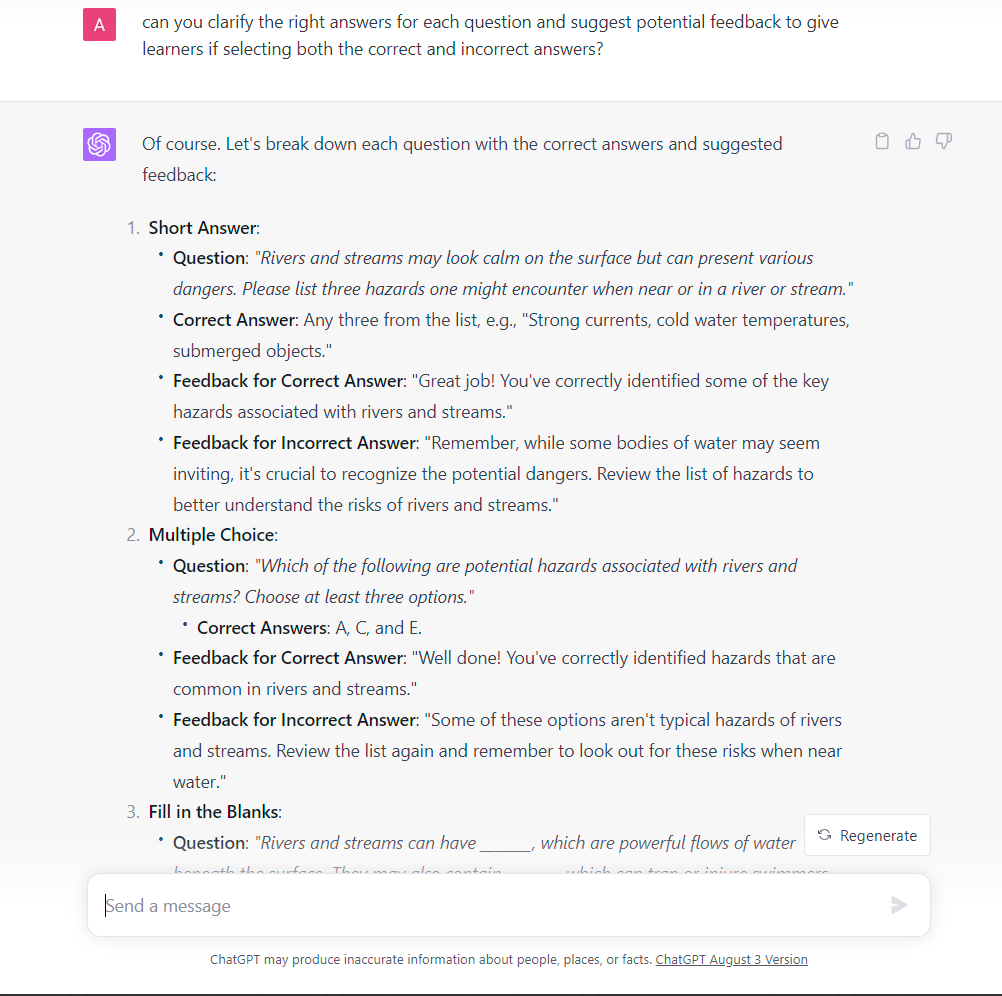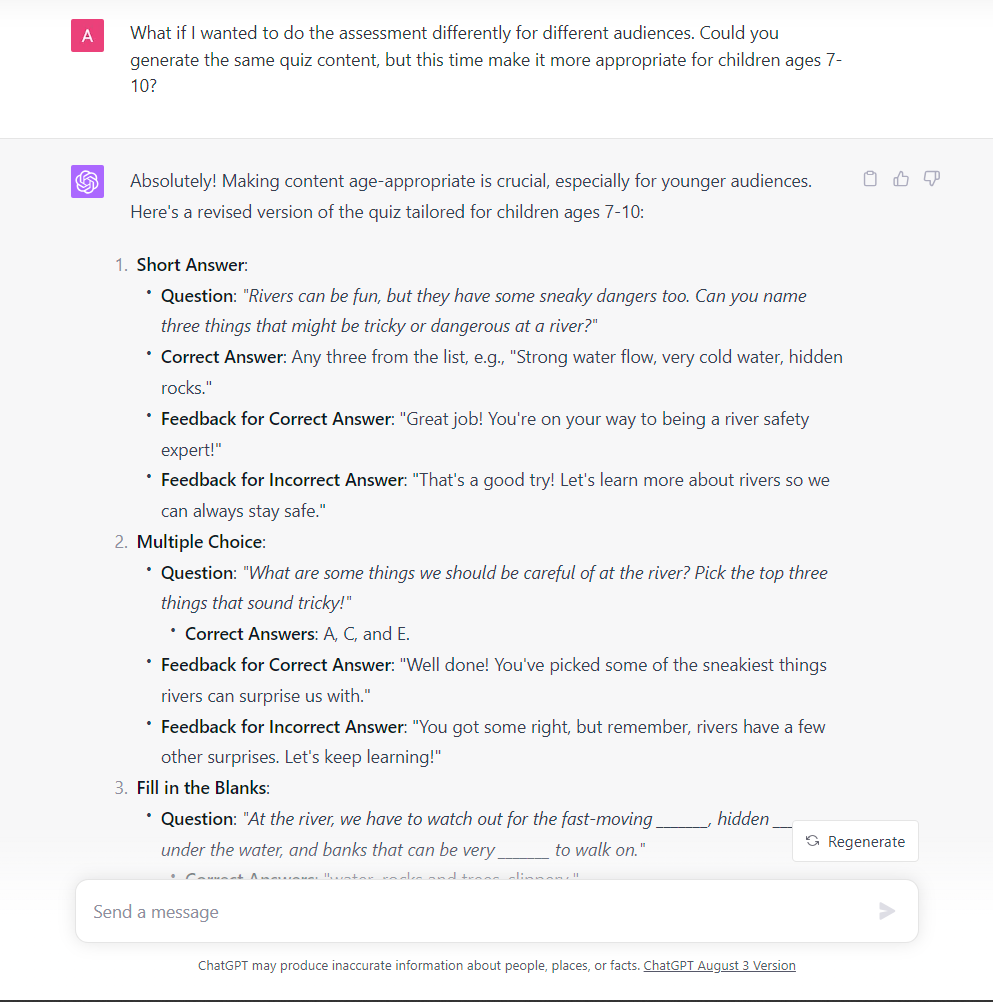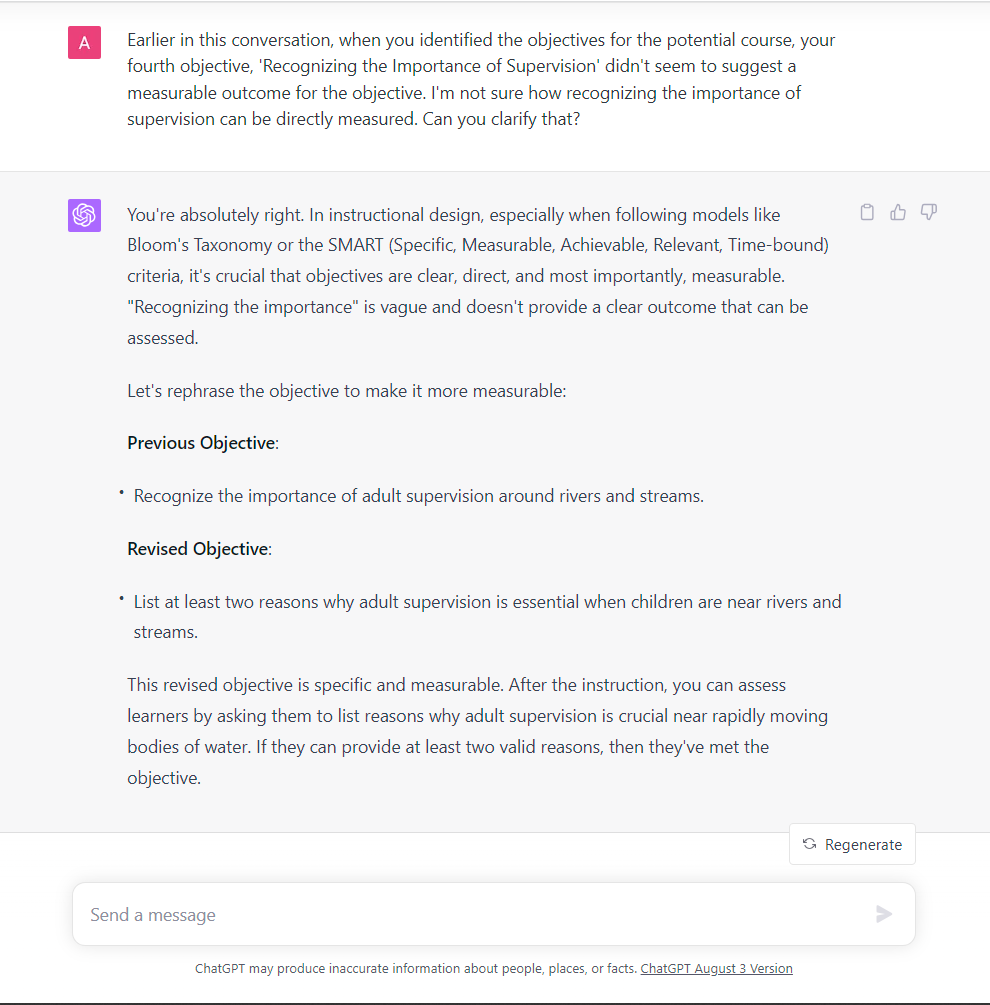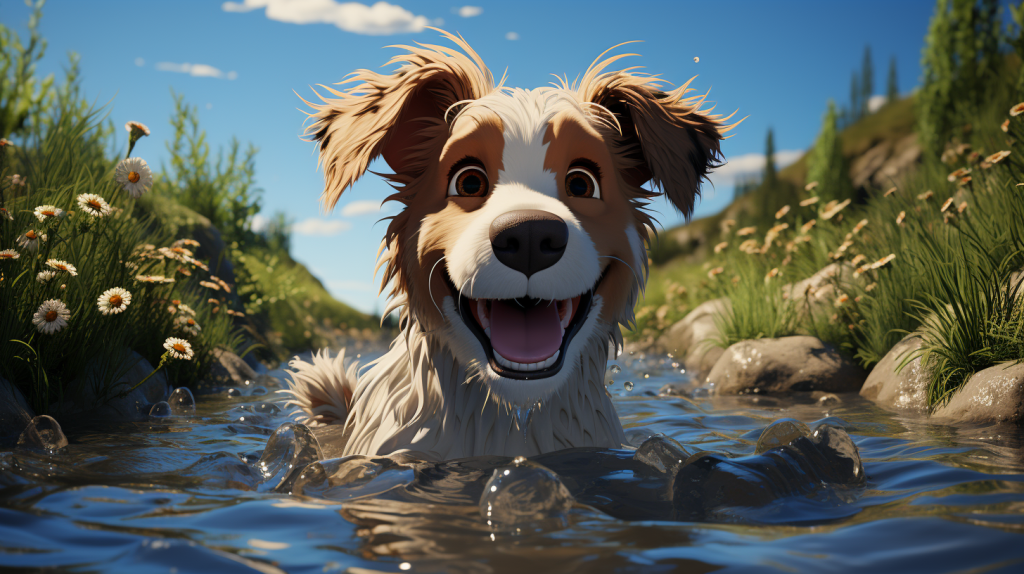Using AI to Create an Interactive Scenario with the All-New-Adobe Captivate: Part Three

Creating the course for me begins with the outline, but I will bounce around quite a bit gathering images, writing content in line with the storyboard / outline and overall imagery. It is not unlike the way I paint, sort of blocking together broad strokes of color, highlight and shadow and slowly filling in the details.
This is probably not the way that most people work. In fact we generally see people begin with a very clearly defined set of learning objectives, then a storyboard, and then finally generating content, activities (interactions) and assessment mechanisms. Here again, I can ask ChatGPT4 to assist me in formulating the lesson objectives. But it is worth noting that mapping the objectives should generally correlate to the assessment / outcome measurement. I’ll want to ensure that throughout the course I am teaching in alignment with these objectives and that the mechanism for measuring outcomes is also aligned to these objectives.
I asked ChatGPT about this – curious to know if it could identify objectives for the proposed scenario based on the conversation we had earlier. It was able to generate a list of objectives rapidly, and you can see that interaction in the image below.
Now this is a great place to pause and note that disclaimer in the image above. ‘ChatGPT may produce inaccurate information about people, places, -or facts.’ There are many reasons why a probablistic model like this could go completely off the rails. Always remind yourself, it is leveraging probability math and relationships to determine the most likely response(s). They are sometimes wrong – so if you rely solely upon ChatGPT to develop content, you will sometimes get it wrong, and could even create legal risks for you and your organization. It is critical that you triple check any response, and think critically about the suggestions. Check your facts and ensure that you are getting it all right.
Let’s talk a little about the relationship between objectives, activities, and evaluation mechanisms. Let’s start with that first objective. An objective always needs to be measurable. Otherwise we cannot effectively determine the impact of the learning. The first objective is good. We will ask participants to identify (list) three common hazards associated with rivers. In the interaction below, I ask ChatGPT to help with that. See the image below for the transcript of my inquiry and ChatGPT’s response.
Overall ChatGPT is doing quite well with this question, associating the key ideas and keeping the alignment to the original objective. But there is also some additional room to get even more assistance from the AI. For example, we can ask it to clarify the correct answers for each question and to suggest feedback for correct and incorrect responses. Consider the transcript below for example.
The fun doesn’t stop there. If this were someone on my team bringing the questions back, I would then remind them of the eventual audience. Are we aiming this training at parents or children or both? Should we have separate evaluations for adults versus children? Why not consider such an option. So I asked the AI to produce a variant of the assessment questions for the first objective that is written for kids.
One of the delights here is that the AI does a nice job adjusting the tone of the language to make it more appropriate for young audiences. It is also worth noting that part of your process can easily include ticklist elements like audience appropriateness, alignment to objectives, appropriate rigor (challenge) for the expected audience and possibly even assistance with things like aligning the objective type to potential methods of assessment.
Now let’s go back for a moment to the original response regarding course objectives. At least one of them didn’t use a clearly measurable outcome. The fourth objective didn’t seem easily measurable to me, so I asked ChatGPT about that.
It’s notable here that ChatGPT has unearthed the ideas about creating learning objectives from popular models. It has taken the models into consideration and associated those ideas with my inquiry. It appears to have understood (though it is merely a matter of association) my criticism about the response and has suggested modifications which are appropriate to improve the relationship between the learning objective and the methods for evaluation – therein ensuring that the metric for evaluating success is measurable.
It is not surprising that ChatGPT would be particularly good at working with this sort of Instructional design related content. That is because things like learning objectives are highly structured. People often consult a list of ‘known’ active verbs for writing learning objectives and draw their own active verbs from those lists. As ChatGPT pointed out – the SMART model is commonly employed to check that the written objectives are specific, measurable, achievable, relevant and time bound. Constrained and formalized structures like this are easier for an AI to associate with writing and give a solid framework. So it should be reasonable to conclude that over time the AI will continue to improve at producing content that follows these structures. Perhaps it will even help us discover new structural mechanisms that may enhance knowledge transfer results.
A modern AI engine with specific skills around natural language processing is an extraordinarily powerful tool IN THE HANDS OF A WELL EDUCATED EXPERT. It may even provide amateurs and novices with guidance that may help them reach far higher than otherwise possible. But just as a calculator will not teach a four year old to do advanced trigonometry, an AI engine can only provide information in the context of the knowledge of the person asking questions.
Now so far, we’ve used ChatGPT extensively, but I’ve also been using Midjourney AI to generate images for this article and for the course itself. Midjourney is a Generative AI solution that uses innovations in diffusion along with a massive training set to allow users to generate images based on text and based on other images. There is common ground between the natural language AI and the Image Generative AI, but there are also some differences.
There are several Generative AI tools available that will allow you to generate images for your content. They range in price from free to subscriptions that can get a bit substantial, and each has it’s own advantages / disadvantages. Adobe even has one called Adobe Firefly which is currently in Beta. You can try using it here.
In the next episode I will continue crafting the course itself, and show you how to create slides, add content blocks. Here’s a little sneak preview of what’s coming next.
All the little things you might want to know:
1. Here’s a link to an article about the two new versions of Adobe Captivate and how they differ.
https://elearning.adobe.com/2023/07/two-new-adobe-captivates-what-does-that-mean/
2. Here’s a link to download the All-New Adobe Captivate (it’s a trial but it will activate if you login and you already have a subscription to Captivate.)
https://www.adobe.com/products/captivate/download-trial/try.html?sdid=CMBLG
(Sign in with ‘Personal Account’ instance of your Adobe ID if you receive “Account Type not supported” error)



